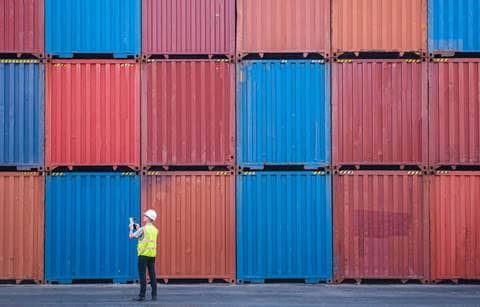Longo
It’s imperative that companies rationalize their global investments, proactively identifying opportunities (and risks) geographically, both from their own standpoint as well as their customers’ current, and future, requirements.
Our clients frequently ask us about reshoring, or bringing previously offshored production of goods to be sold in the U.S. back to the U.S., and how it fits within today’s global environment and their own international strategy development. As we’ve said, there’s no one-size-fit-all solution, and for some companies, geographic rationalization includes reshoring.
Moser
Most production was offshored because wages were so low in China, Mexico, and other places. Companies didn’t do their homework and only looked at wages, the purchase price of the product or the landed cost, but not at the total cost of ownership.
Those other costs include and relate to carrying costs of inventory, IP risk, quality and warranty issues, product liability risk, the hit to innovation when you separate R&D and engineering from manufacturing, supply chain interruption, loss of control over “green” considerations, and others.
With labor costs in emerging markets rising — as much as 15 to 20 percent annually — and low energy prices in the United States right now, companies that didn’t do the math and ignored those other costs are realizing that the gap is now small enough that in a lot of cases it makes sense to bring the work back. Companies can do the math using our free online TCO Estimator.
The rate of new offshoring has dramatically declined. I like to say, we haven’t won the war but certainly we’ve stopped the bleeding. There is still roughly a $600 billion trade deficit in goods, which represents about four million manufacturing jobs.
Longo
I often hear companies use the recovery in U.S. manufacturing as an excuse for putting international expansion on the back burner. But American companies that want to grow need to have, or be developing, an international strategy in some form. Reshoring may be one part of a company’s overall strategy, but it is a different animal from investing in partnerships, operations, acquisitions, or market penetration efforts overseas.
Moser
I tend to go back to first principles, that you make goods near where they’re going to be consumed. Let me share one of my favorite examples: A few years ago, GE had its U.S. engineers take apart some water heater models that had been designed and produced for GE in China and re-design them. The new models resulted in lower warranty costs and better thermal efficiency. Even though wages were five times higher here, the engineers had simplified the design so much that GE could sell a made-in-the-USA product for 20 percent less. You can’t get a better story than that. It underscores the importance of having your engineering and manufacturing functions together, not necessarily in the same building but at least speaking the same language and in the same time zone and able to work together.
Longo
Agreed about first principles. OEMs and consumers are demanding goods produced locally or regionally. Foreign firms are moving their manufacturing here to be closer to the U.S. market, and many U.S. suppliers are finding their OEM customers, who are producing in Mexico, for example, want them to be in-country.
Another issue that comes up a lot among our clients, particularly in the middle market, is talent. I know readers will wonder, ‘Who is going to do all this work I bring back?’
Moser
Skilled labor availability is a challenge. There has to be a healthy ecosystem and a workforce ready for reshoring. Commentators, educators, the U.S. Department of Labor — we all have to show young people that there are alternatives other than pursuing a four-year college degree. Apprenticeships in the skilled trades, training programs, referring to toolmaking not as a vocation but as a profession like they do in Germany and Switzerland, we need those kinds of efforts to change the perception of manufacturing into one that is a viable, lucrative career pursuit.





